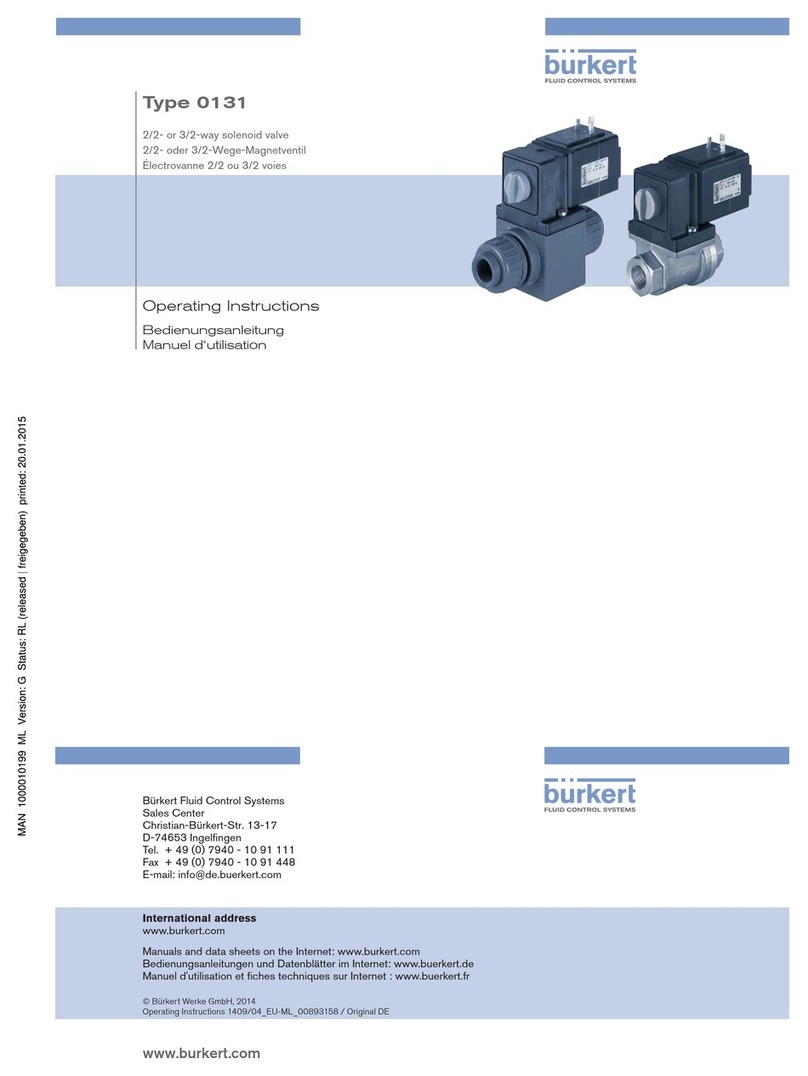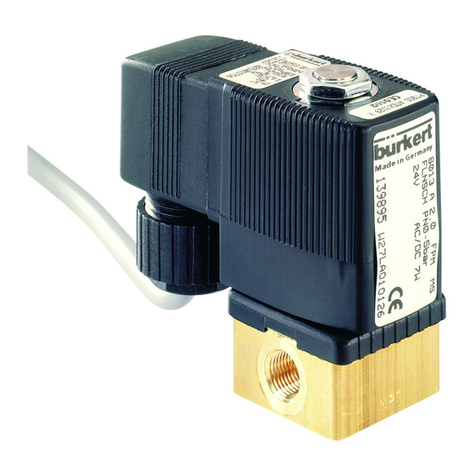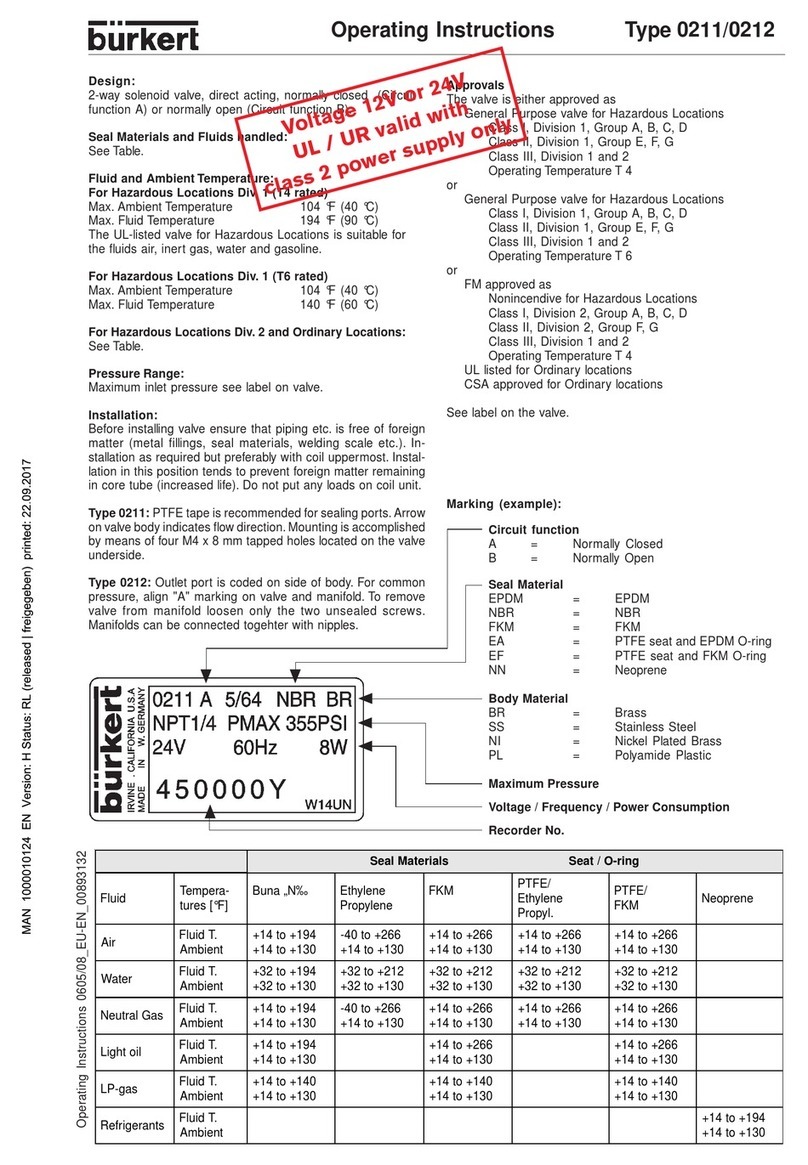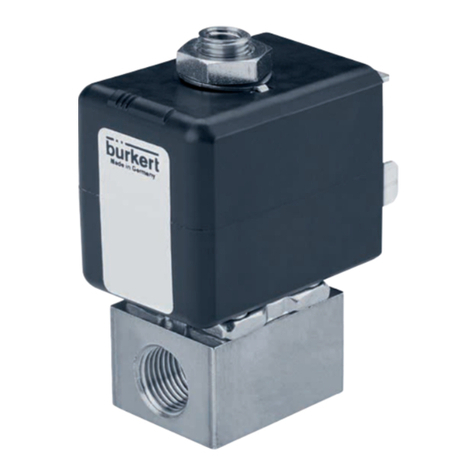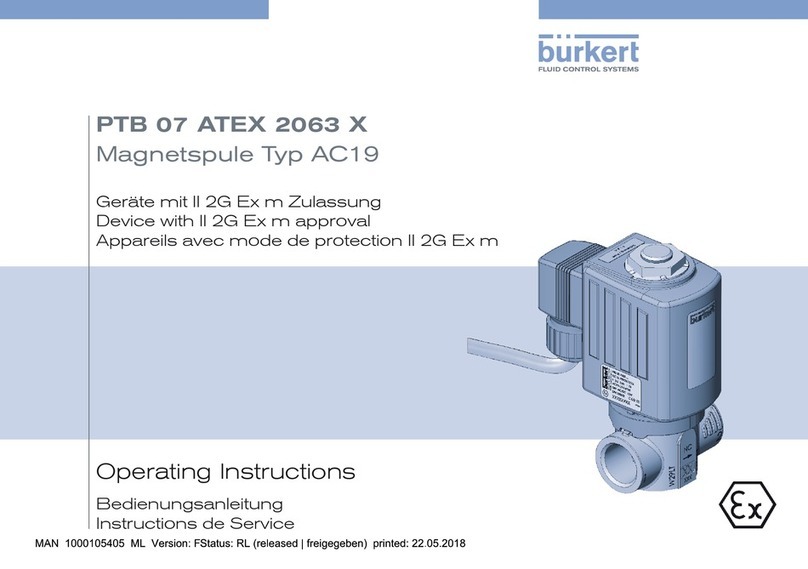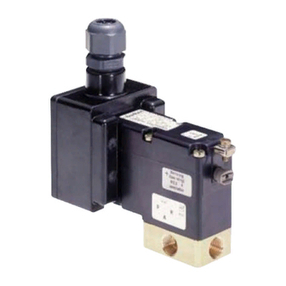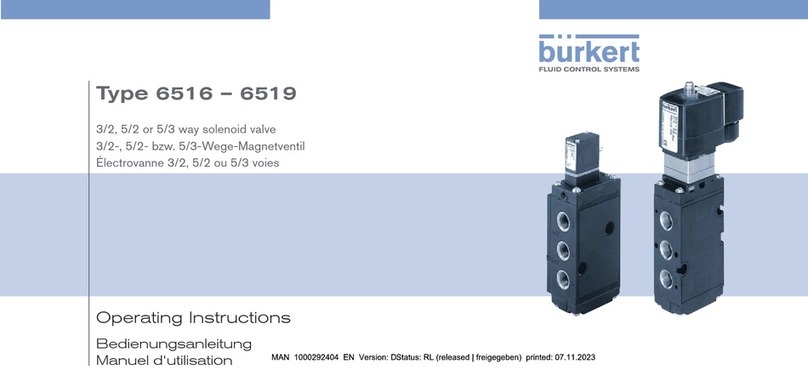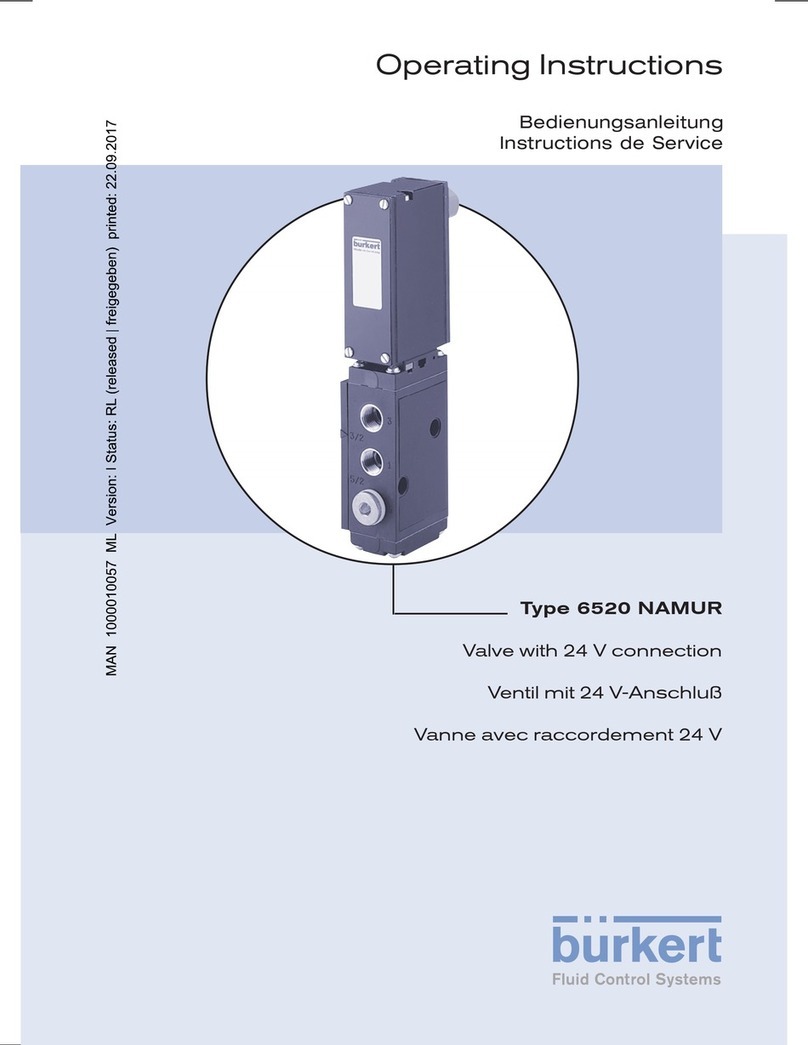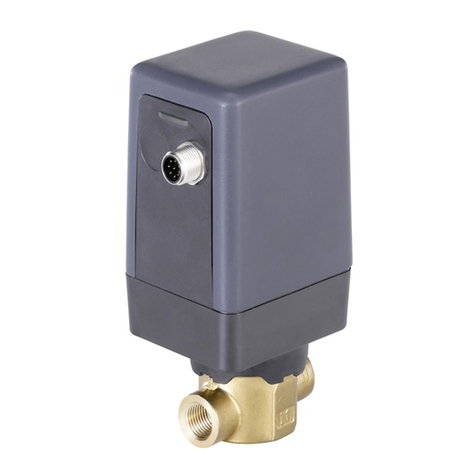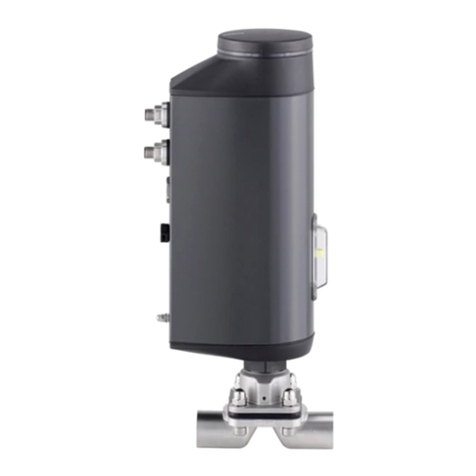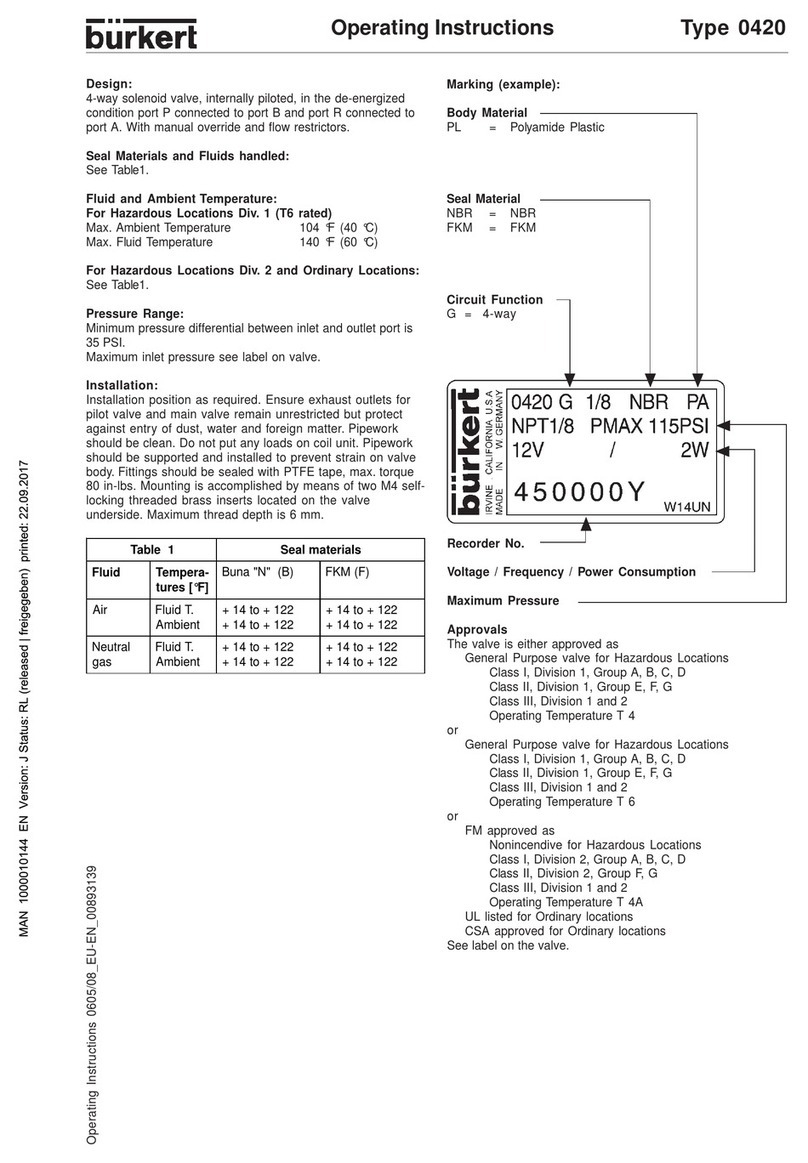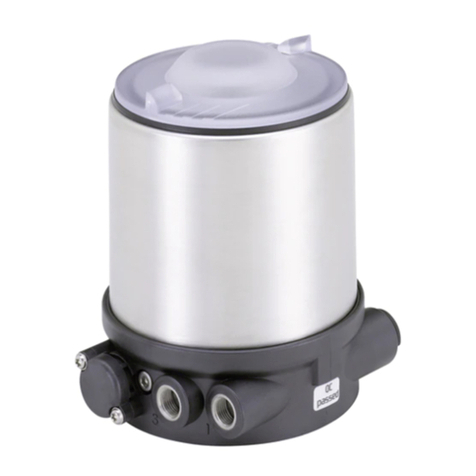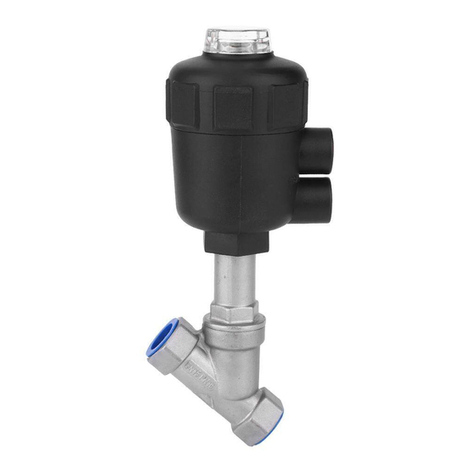
9
Installation
7 INSTALLATION
DANGER!
Risk of injury from high pressure in the equipment.
There is a serious risk of injury when reaching into the equipment.
▶Turn o the pressure and release the pressure in the pipes
before loosening pipes and valves.
WARNING!
Risk of injury due to improper installation.
Improper installation may result in injuries as well as damage to
the device and the area around it.
▶This work may be carried out by authorised technicians only
and with the appropriate tools.
Risk of injury due to unintentional activation.
Hazardous situations may arise due to unintentional activation
of the system.
▶Take appropriate measures to prevent the equipment from
being unintentionally activated.
7.1 Ball valve with screw thread
Check that the pipes which are to be connected to the
ball valve are on one level. This will prevent mechanical
tension on the screw joint.
→Screw the ball valve to the pipe.
→Check that the ball valve is rmly attached to the pipe to ensure
appropriate tightness.
7.2 Ball valve with welded connection
NOTE!
To prevent damage to the ball valve and the contained seal,
disassemble the ball valve from the pipeline prior to welding.
Disassembling the ball valve:
→Undo the four body bolts and disassemble the ball valve into
three parts.
→Remove the seal from the connection element.
→Weld the connection element to the pipeline.
→ Assemble the ball valve and x it into position using the four
body bolts!
Make sure the seals are seated correctly!
Refer to the following table for tightening torques!
Welding of the ball valve Type 2654 Hygienic is possible
under the following conditions:
•Orbital welding using orbital welding equipment.
•The heat impact on the seals must not exceed the
maximum temperature. The maximum temperature for
the stainless steel valve body is +200 °C.
english
Type 2651, 2654, 2654 Hygienic,
2660, TKU001/2/3

